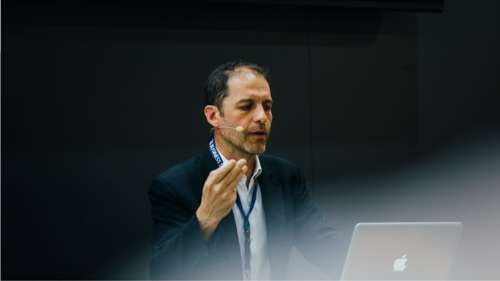How to deal with preps for a better longevity of indirect restorations!
Worn dentition: minimal-invasive treatment
In the introductory part of his presentation, Dr. Oliver Etienne explains the two main causes for worn dentition, in other words, massive loss of hard dental substance. One major reason is bruxism which is caused by stress. According to the relevant literature, 10 % to 13 % of adults grind their teeth at night while they are asleep. During the day, the percentage is even higher. Dentists are more and more often faced with the symptoms of bruxism: attritions and an imbalanced occlusion.
Worn dentition can also be triggered off by erosion. To support this, Dr. Etienne quotes some studies showing that nowadays, almost 30 % of adults in Europe suffer from erosion, for example caused by excessive consumption of soft drinks containing sugar or anorexia etc. In his presentation, Dr. Etienne presents a few typical case studies, for example of patients with worn dentition caused by a combination of bruxism and erosion.
How to treat worn dentition correctly
In mild cases of worn dentition, direct composite restorations are the first choice. In cases of severe loss of healthy dental substance, however, indirect restorations are the only treatment method that covers all prosthetic aspects (wax-up, mock up). This is the only way to recreate the vertical dimension of the occlusion. Dr. Etienne likes to work with the special instruments from the Perfect Veneer Preparation (PVP) set 4686/ST and the Occlusal Onlay Set 4665/ST during preparation for indirect veneer restorations. He is very impressed with the ideas of the two German inventors Dr. Ahlers and Prof. Dr. Edelhoff, for example the depth markers 868BP with uncoated guide pin. These instruments prevent an undesirable penetration too deeply into the enamel and ensure that the predefined shape is observed.
In his presentation, Dr. Etienne also presents the OccluShaper 370. Thanks to its special shape, the instrument does not leave any sharp edges and prepares a wavy occlusal shape. “With the OccluShaper, the enamel prisms are cut orthogonally, contrary to V-shaped preparations where they are cut in a parallel pattern. The wavy shape creates the ideal conditions for the subsequent bonding”, says Dr. Etienne.
A shiny finish
At the end of his presentation, Dr. Etienne recommends the set 4637 for final polishing. The set was developed for trimming and polishing ceramic restorations such as zirconium or lithium silicate. The ZR abrasives are distinguished by their impressive removal capacity. They are perfectly complemented by Art2 polishers for two-step polishing. These polishers polish indirect restorations to a natural looking high shine in just two steps.
The procedure shown in the presentation is without a doubt the currently most elegant way of treating worn dentition. However, when it comes to fighting the above described causes, i.e. bruxism and erosion, the onus is still on the patient.
